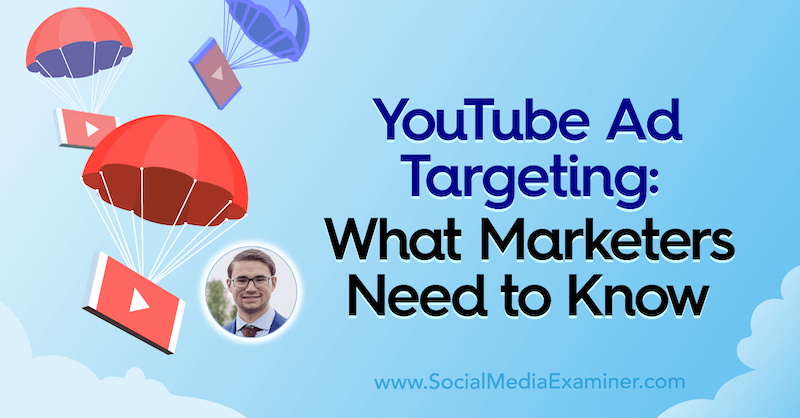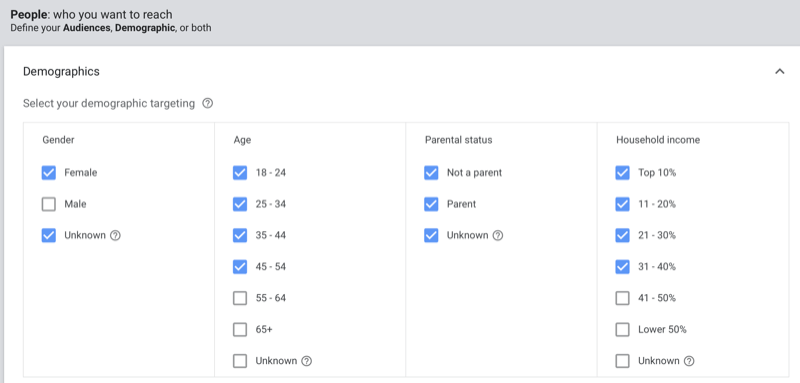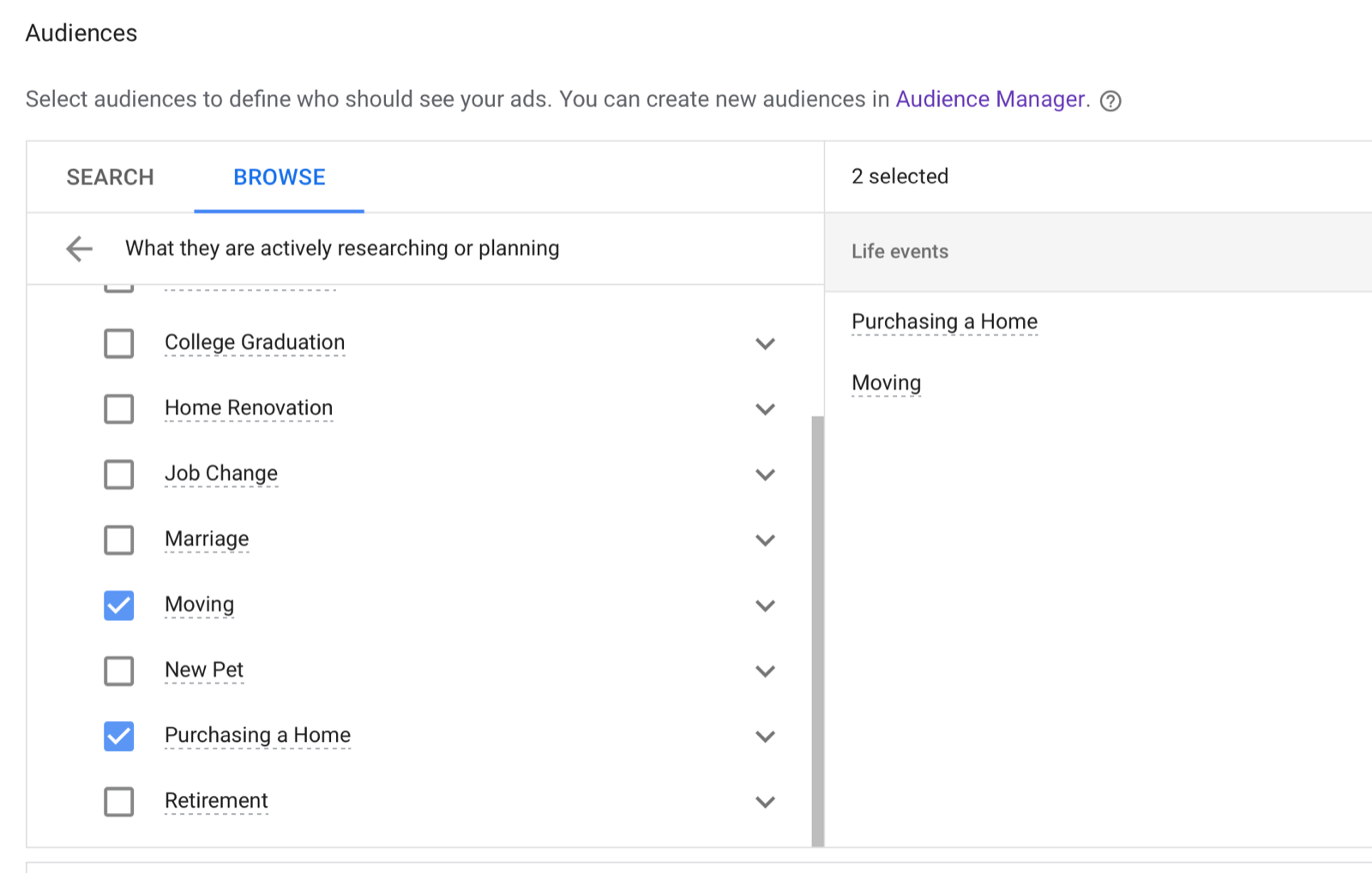Want to use YouTube ads to sell your products? Wondering how to get your ad in front of the right audiences?
To explore YouTube ads targeting, I interview Aleric Heck on the Social Media Marketing Podcast.
Aleric, a YouTube ads expert, is the founder and CEO of AdOutreach—a consultancy that helps marketers and business owners sell products and services. He also developed the YouTube Ads Workshop.
Aleric explains the three elements of his 3D YouTube ad targeting strategy and shares tips to help you apply 3D ad targeting in your marketing.
Listen to the Podcast Now
This article is sourced from the Social Media Marketing Podcast, a top marketing podcast. Listen or subscribe below.
Where to subscribe: Apple Podcasts | Spotify | YouTube Music | YouTube | Amazon Music | RSS

Aleric has been on YouTube since 2009, when—at age 12—he began a channel called AppFind, where he did tech reviews, mobile app reviews, tutorials, and other types of content. By the time he entered college, his audience had grown considerably and applications were paying him in return for being featured on his channel. He was actually able to use that revenue to pay for college.
By this time, Aleric says he'd read The 4-Hour Workweek, had systematized a lot of workflows, and had hired a video editor. He was also thinking about life after college and knew he wanted to build a business.
About 6 years ago, a performance marketing company representing an app that had been featured on his channel reached out to ask if he would post that video on his channel again because it was delivering amazing results for the app. Aleric was hesitant to take their money because he knew reposting the video wouldn't give them the same results; his viewers had already seen that video.
He thought about the idea for a while, then proposed running that same video as a YouTube ad. The company was a little skeptical but agreed to let Aleric run the ad with a budget of $500. In just 1 week, that ad generated more than 11,000 users for the app.
Later, the same company reached out on behalf of a prominent client. While the client felt that Aleric's channel was too small to work with, they wanted Aleric to run the ads for their other YouTube promotions. Aleric ran the campaign and recognized he was really hooked on YouTube ads.
Then, in 2016, Aleric met Dave Woodward from ClickFunnels at HubSpot and realized he could run an ad to a funnel and generate actual sales. He began running YouTube ads to drive app developers to attend and watch a webinar, and then enroll them as clients. He was seeing 50%–60% attendance rates on every webinar at a time when most people were seeing much lower attendance rates from Facebook ads.
That's when he understood he had something special.
Get World-Class Marketing Training — All Year Long!
Are you facing doubt, uncertainty, or overwhelm? The Social Media Marketing Society can help.
Each month, you’ll receive training from trusted marketing experts, covering everything from AI to organic social marketing. When you join, you’ll also get immediate access to:
- A library of 100+ marketing trainings
- A community of like-minded marketers
- Monthly online community meetups
- Relevant news and trends updates
He rebranded his company as AdOutreach and focused on working with YouTube ads for businesses with an emphasis on funnels. He also switched from an ads-done-for-you model to an ads-done-with-you model via training and hands-on help in the YouTube Ads Workshop Program.
Why YouTube Ads for Improved Targeting?
Several key elements make YouTube ads more effective than Facebook ads; a notable element is intent.
On Facebook, people aren't typically searching for a solution to a problem. They're scrolling their personal news feed and you have to interrupt them to get in front of them.
On YouTube, people are often searching for a solution and you're reaching them when they have intent to learn or buy something.
In addition, Google's research has shown that 80% of people ages 18–48—a prime buying demographic—are on YouTube consistently. What's more, 68% of people in that age range make purchase decisions based on YouTube videos but only 9% of businesses (at the time of the study) are actually advertising on YouTube. That's a lot of market share up for grabs.
3D YouTube Ads Targeting Strategy
Most people are only targeting their YouTube ads in two dimensions: Demographics and intent.
Aleric's 3D YouTube ad targeting strategy adds a third targeting dimension: Audience.
Instead of targeting based on loose demographics like age, gender, and income, and then combining that with the video they're watching, he layers who they are as a person. At the center of that Venn diagram of those three dimensions of YouTube ads targeting is the ideal client.
Demographic Targeting
Demographic targeting focuses on attributes such as a person's location, age, gender, and household income. Income targeting is especially effective if you're selling a higher-ticket product, course, or service.

Location can be broad—such as anyone in the United States—or narrowed by a zipcode or a street address with a radius around it. The latter is very helpful for marketing a local business.
Additional demographic targeting opportunities include the language someone speaks or the language in which they're watching videos… even whether someone has children.

Discover Proven Marketing Strategies and Tips
Want to go even deeper with your marketing? Check out the Social Media Marketing Podcast! Publishing weekly since 2012, the Social Media Marketing Podcast helps you navigate the constantly changing marketing jungle, with expert interviews from marketing pros.
But don’t let the name fool you. This show is about a lot more than just social media marketing. With over 600 episodes and millions of downloads each year, this show has been a trusted source for marketers for well over a decade.
Intent Targeting
Intent targeting focuses on what a person is searching for and/or the video(s) or channel(s) they're watching on YouTube at any given point in time.
Aleric recommends three ways to take advantage of intent targeting on YouTube. 1) You can run your ads in front of a specific video or in the videos on a specific channel; 2) You can run your ads in videos that contain a specific keyword in their tags, meta, or titles; and 3) You can run your ads to a collection of videos that Google has identified as relevant to a broad topic such as marketing, health and fitness, real estate, and so on.
While he takes advantage of all three of these placements, he heavily favors keyword targeting—specifically using ‘how to' keyword phrases such as “how to lose weight,” “how to get more sales,” or “how to grow my business.” Keyword targeting is so effective, he says, because Google (YouTube's parent company) has perfected keyword search. You're essentially taking the power behind Google pay-per-click ads but using it on YouTube with a rich media video.
Using YouTube discovery ads makes keyword targeting an even richer opportunity. When someone searches YouTube and you've targeted the keyword or phrase they're using, your video can pop up at the top of the results. What looks very similar to an organic result is essentially a search ad served in a way that simulates natural content. Aleric notes that he's used discovery ads to scale up many channels by generating views that result in thousands, and in some cases, hundreds of thousands of subscribers.
Audience Targeting
Audience targeting focuses on the specific details of who a person is based on what Google knows of their search history and where they've gone online, leveraging their expressed interests and affinities.
You can target people based on life events. To illustrate, real estate agents can target people who are moving soon and searching for a place to live.

Beyond that, you can also target people based on a collection of Google searches. Let's say someone searched Google for ‘Social Media Examiner' in the past and is now watching videos on YouTube. You could target that person based on their past search of ‘Social Media Examiner.'
What's mind-blowing to Aleric, however, is that you can build an affinity audience based on a URL to target people who have visited any website that has Google Analytics installed on it, whether that website is yours or someone else's. You can even build an audience of people who visit sites that are similar to the site you identify, essentially creating a lookalike audience of other people's website traffic.

You can also create an audience of people based on the apps they've used. To visualize this, if you're a personal trainer, you could target people who are using or have used several weight loss apps. Or, you can target people who use the Facebook ads and Google ads mobile applications. While the exact match will only give you an audience of people who use these apps on Android (Google can't track the use of iOS apps), you can also create an effective lookalike audience of people who have an affinity for those apps to target Apple app users.
Putting It All Together
To understand the magic of using all three of these dimensions together, Aleric shares the following example.
Say you're a nutritionist who helps business owners lose weight with one-to-one coaching. The one-to-one coaching makes this a high-ticket program.
Demographic targeting: Target the top 30% of household income earners because they can afford a higher-ticket program.
Intent targeting: Target people who are searching for ‘how to lose weight' and watching videos on workout tips, nutrition, and similar topics.
Audience targeting: Target business owners.
At the center of that layered targeting is a business owner who's watching a video on how to lose weight and who's in an income bracket that can afford your service.
Key Takeaways From This Episode:
- Learn more about Aleric Heck on his website adoutreach.com/sme.
- Enroll in Google Analytics for Marketers at GASuccess.live.
- Watch exclusive content and original videos from Social Media Examiner on YouTube.
- Tune into our weekly Social Media Marketing Talk Show. Watch live on Fridays at 10 AM Pacific on YouTube. Listen to the replay on Apple Podcasts or Google Podcasts.
- Download the Social Media Marketing Industry Report.
Help Us Spread the Word! Please let your Twitter followers know about this podcast. Simply click here now to post a tweet.
If you enjoyed this episode of the Social Media Marketing podcast, please head over to Apple Podcasts, leave a rating, write a review, and subscribe.
What do you think? What are your thoughts on the 3D YouTube ad targeting strategy? Please share your comments below.
Attention Agency Owners, Brand Marketers, and Consultants

Introducing the Marketing Agency Show–our newest podcast designed to explore the struggles of agency marketers.
Join show host and agency owner, Brooke Sellas, as she interviews agency marketers and digs deep into their biggest challenges. Explore topics like navigating rough economic times, leveraging AI, service diversification, client acquisition, and much more.
Just pull up your favorite podcast app, search for Marketing Agency Show and start listening. Or click the button below for more information.

